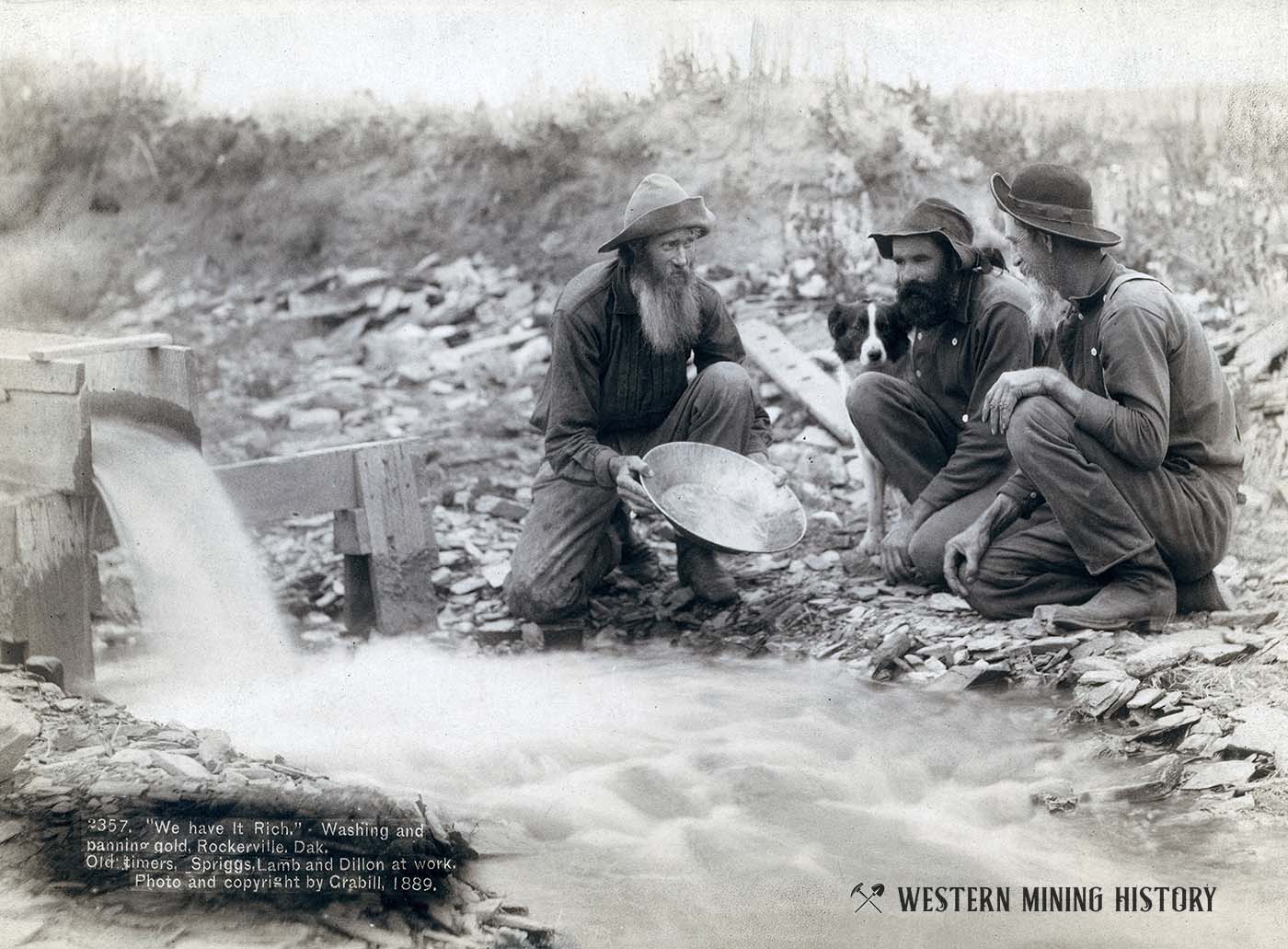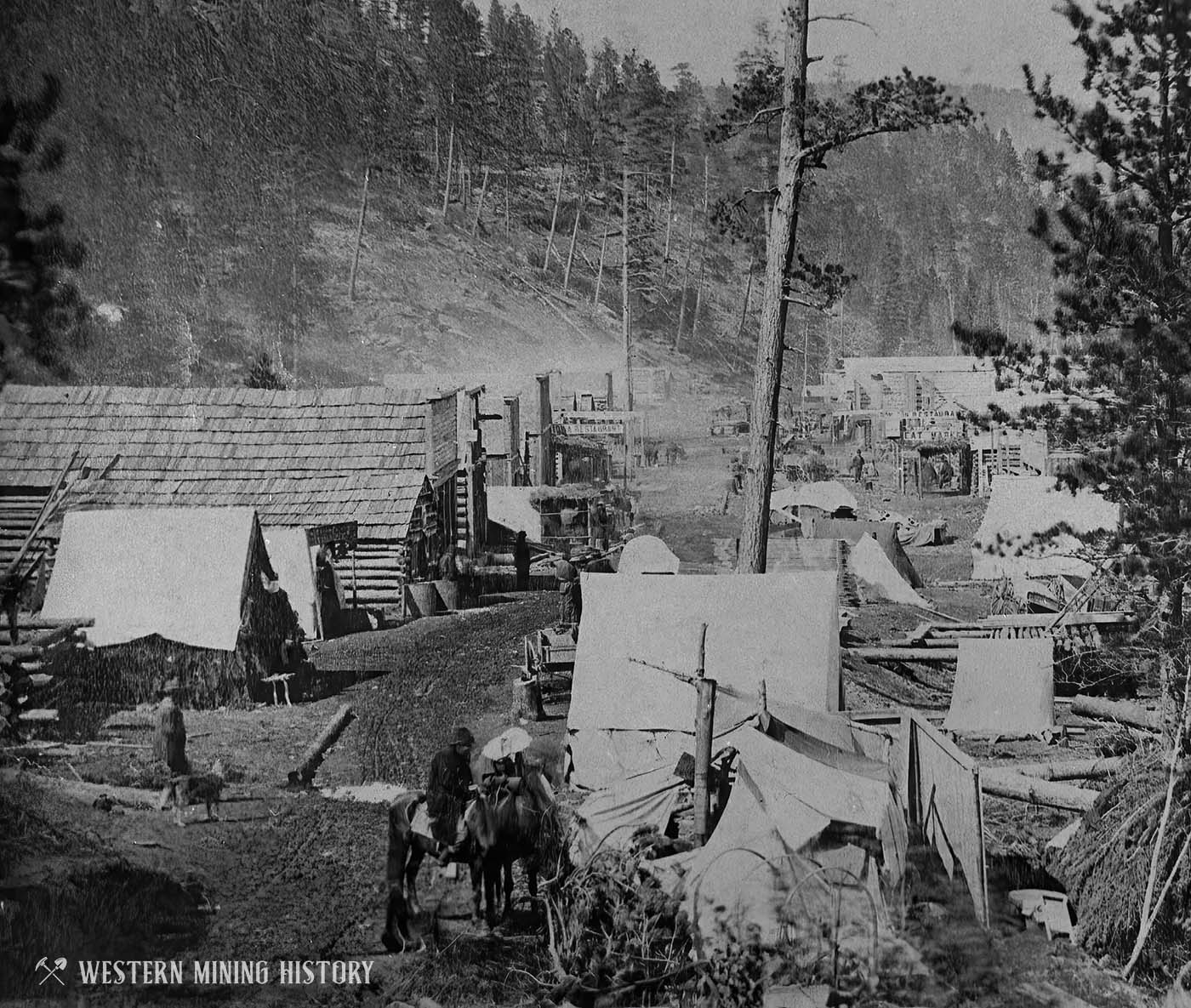Rockerville History
Rockerville was one of the many placer gold camps established during the Black Hills Gold Rush. Initial discoveries here were in 1877, and subsequently the town of Rockerville formed at the site, and a post office opened in 1879.
Rockerville was known for it's extensive placer deposits, and was the site of numerous flumes built to bring water to some of the Black Hill's first hydraulic mining operations.
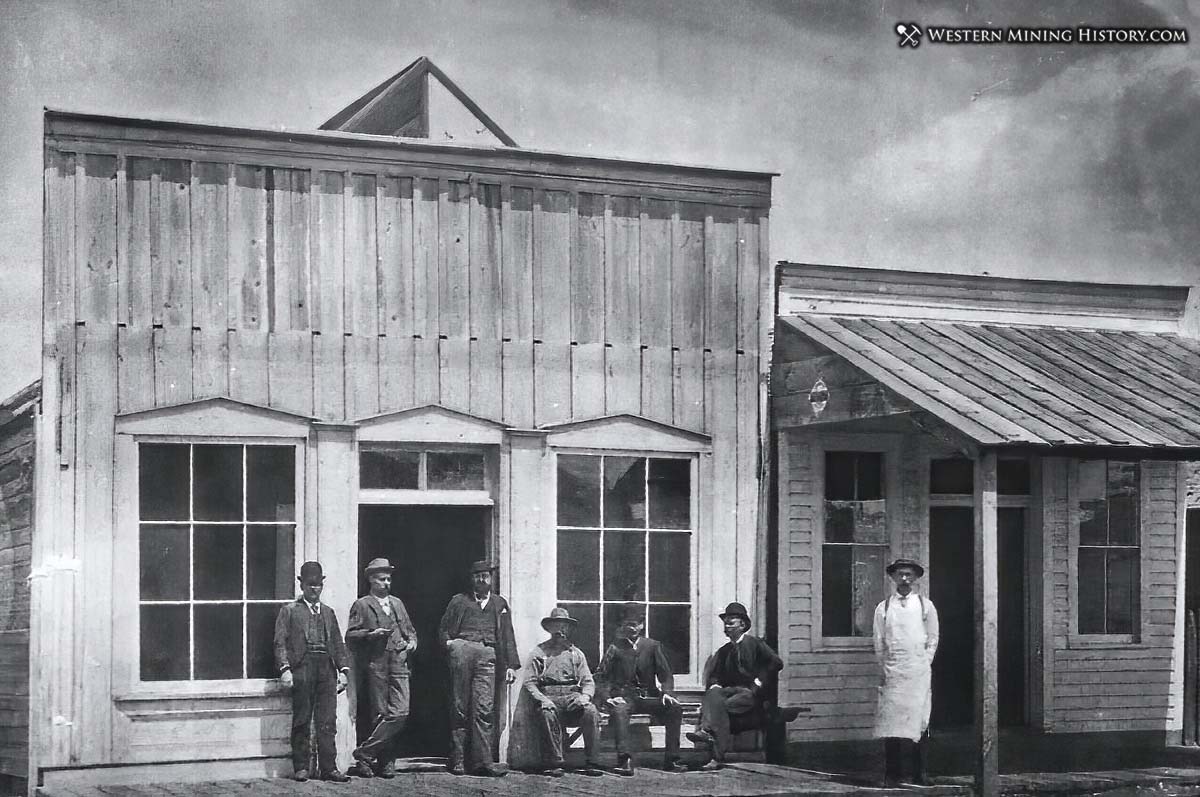
As the mines ran out, Rockerville declined. The post office closed in 1915, but tourism in the area kept the town alive for many decades. By the 1990s, tourism could no longer support the town and it was mostly abandoned.
The early history of the town was described by a June, 1882 article from The Black Hills Weekly Journal, parts of which are included below.
Early History of Rockerville
The portion of Pennington county embraced within the boundaries of Rockerville district has, since the first discovery of gold in its placers, played an important part in the production of that mineral, and was for two or three years known as the banner placer district, and the town of Rockerville as the banner placer camp of the Black Hills.
Rockerville looks enough like a mining town of the olden time to make the "49-ers" heart expand with hope at the first view. There are the familiar mud-chinked cabins, with cans and bottles strewn around in profusion, and smoke wreaths curling over from the smouldering embers which are seldom allowed to entirely expire; here and there the remnants of a worn-out pick, pan or shovel at the door; long ridges of tailings; and knots of blue-shirted fortune-seekers all around giving their mining experience in the past and making predictions for the future.
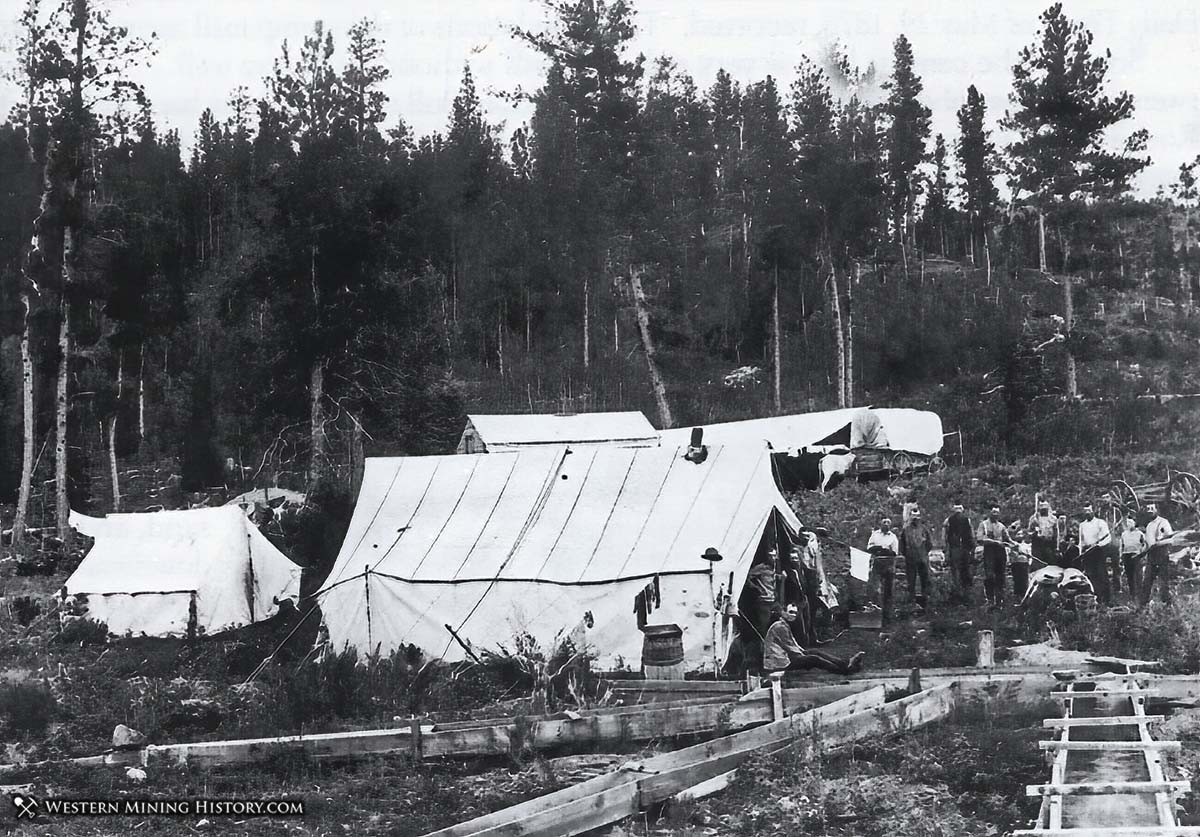
As we advance up the main gulch things assume a more civilized aspect. We note many business houses of respectable pretensions, and find that all the ordinary lines of business are represented. A stroll among the old settlers results in our obtaining some information in regard to the first discovery of gold in Rockerville basin. Gold was discovered there in February, 1877, by Wm. Keeler, whose camp was at the time on Battle creek-seven miles in a southerly direction from Rockerville, and another rich gold district.
From the three first pans of dirt washed. Mr. Keeler obtained $1.52. The Battle creek diggings were then yielding well, and it required good prospects to get up an excitement among the few miners settled at that point; and, while Mr. Keeler's discovery was not rich enough to cause an outright abandonment of Battle creek, "Captain Jack," Oscar Cline and Charles Blackburn returned with him. They all got good claims, from which they rocked out considerable money in the spring and summer of 1877.
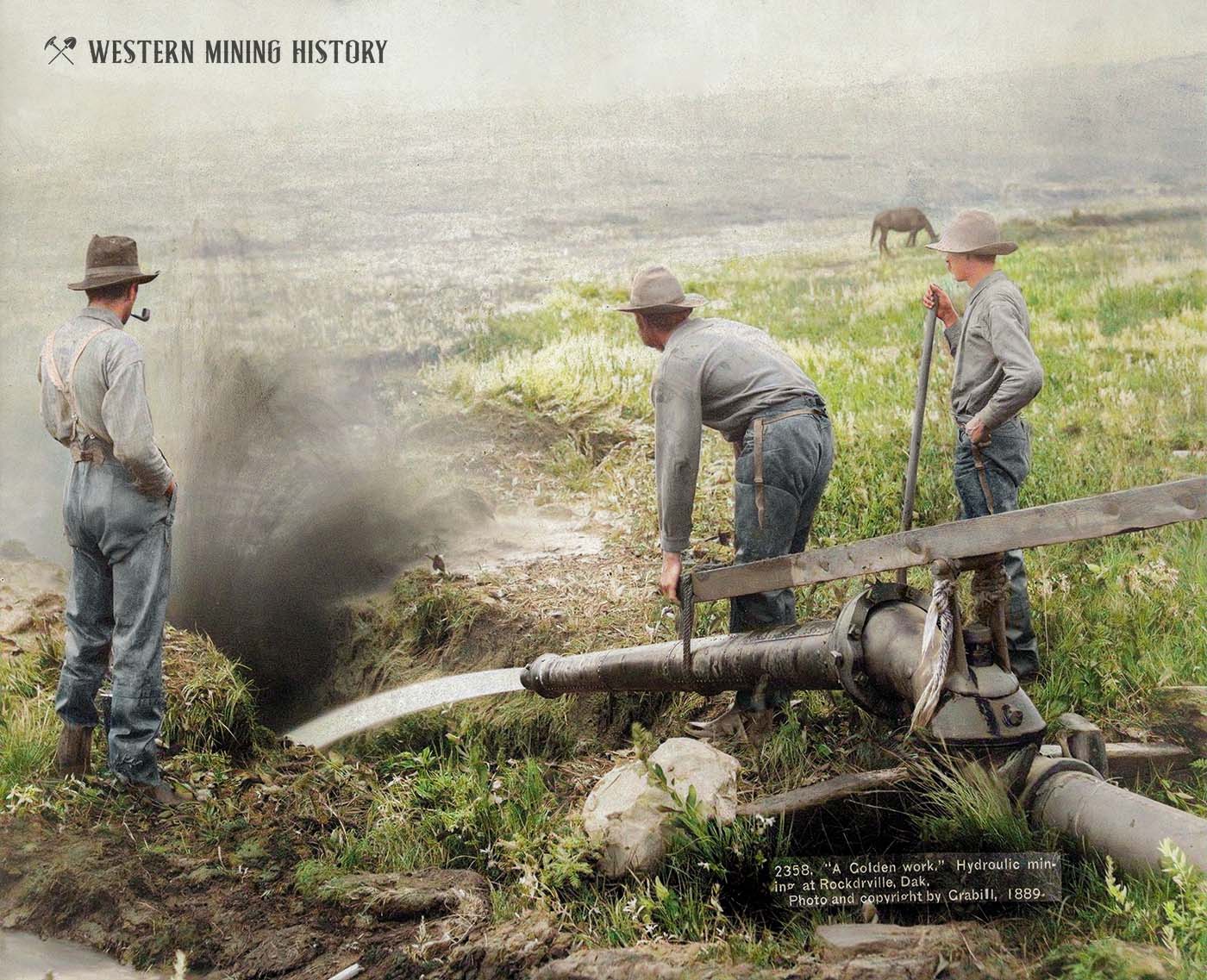
Following this party came in Bart. Henderson, D. G. Silliman and a man named Colbaugh, and they soon found very productive deposits in a gulch which they named "Henderson," in honor of the leader of the party-and by the way there is also a Henderson gulch in Idaho, and a Henderson gulch in Montana, as well as out here in the Black Hills, and our old friend Bart discovered them all.
Though there was but little water in the camp during the first working season, reports of the richness of the diggings were carried to all parts of the Black Hills, attracting thither large numbers. At the close of the working season of 1877, the year of the discovery, Rockerville a a thriving town of several hundred inhabitants, and the gold yield for that season, having no more water than a common house pump steadily operated would raise, was not less than $150,000.
Many came, found rich ground, and left the camp be cause they could not get water to work their claims. All mining was done that season by using the rocker. The same water was used over and over, being almost too thick to run by the time it had passed the last of the long string of rockers which were being operated. The fact was now fully demonstrated that the placers of Rockerville district were among the richest and most extensive ever discovered.
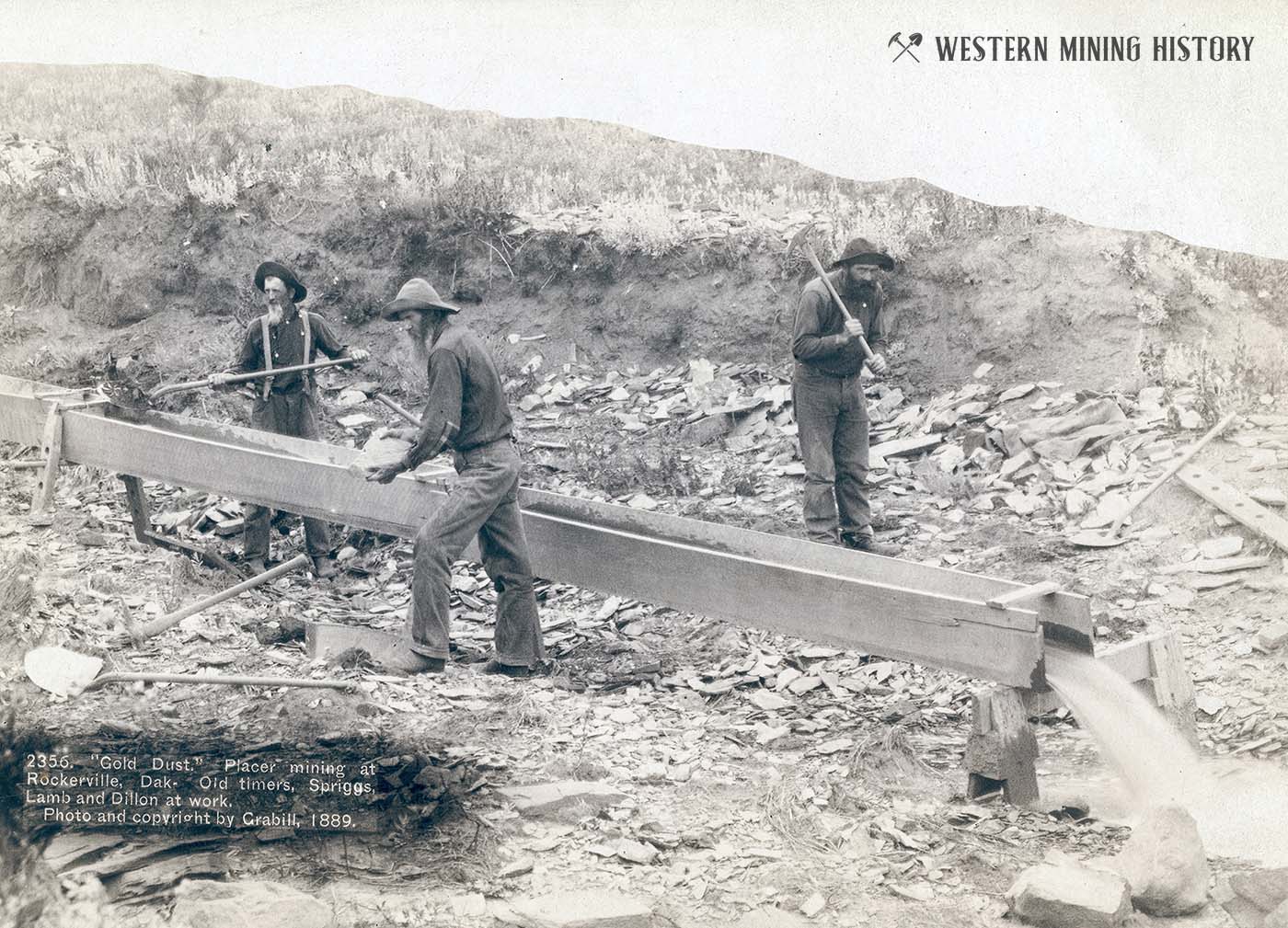
The next working season, that of 1878, there was copious rainfall almost every month, affording a great increase of water over the quantity available the year before. and a much greater amount of gold was taken out. The reports of the bankers for that year show that there was more placer gold taken out of Rockerville district than all the other placer camps combined; but owing to the scarcity of water, and the impossibility of conveying what little there was outside of Rockerville gulch, only the richest of the claims could be worked, and the bulk of the gravel washed was hauled a long distance for rocking. The estimated gold yield for 1878 was $250,000.
Mining in the Black Hills
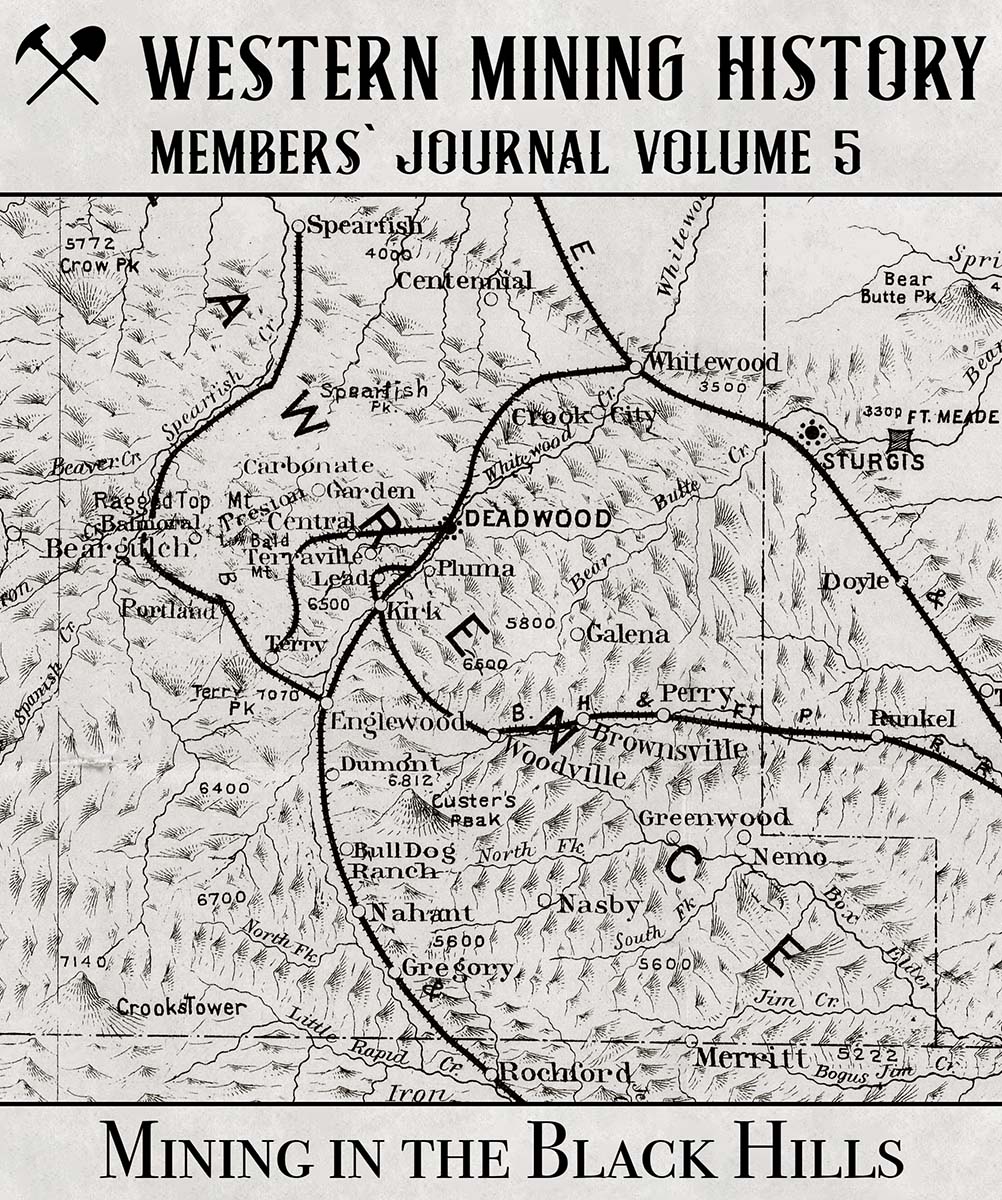
Western Mining History Member's Journal Volume 5: "Mining in the Black Hills", takes a closer look at the distribution of mining districts and towns the Black Hills of South Dakota.
Deadwood: The Ultimate Photo Collection
The Black Hills Gold Rush was one of the most significant historical events in the western United States. Deadwood: The Ultimate Photo Collection contains over 50 images capturing the early history of this famous gold region.
